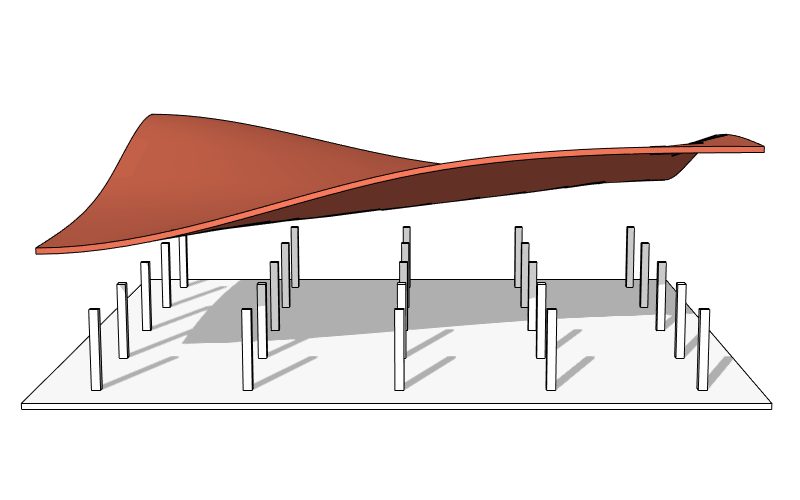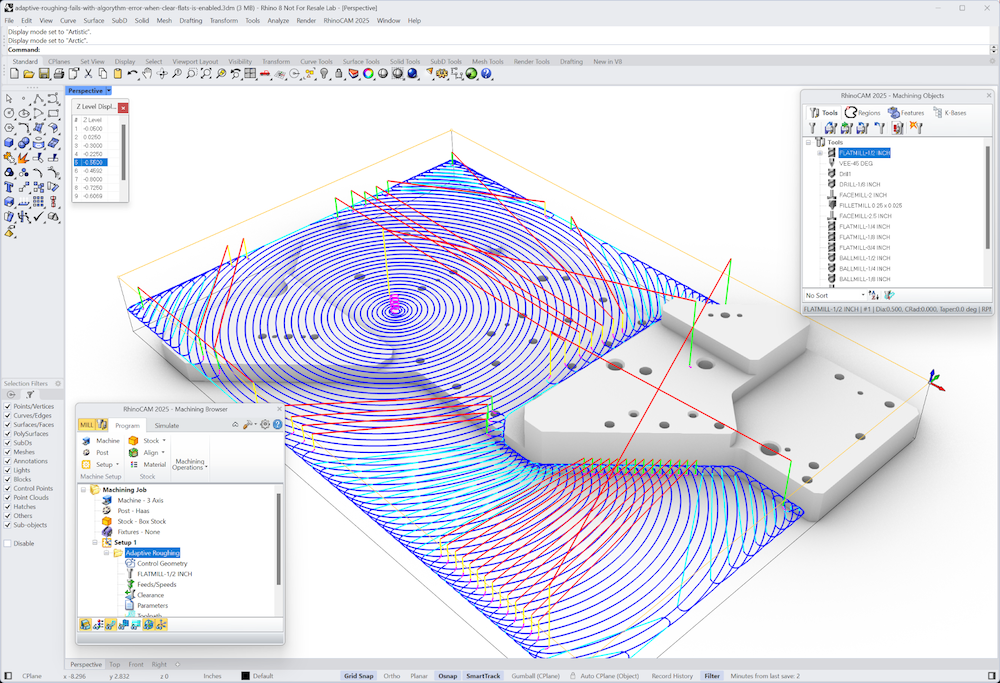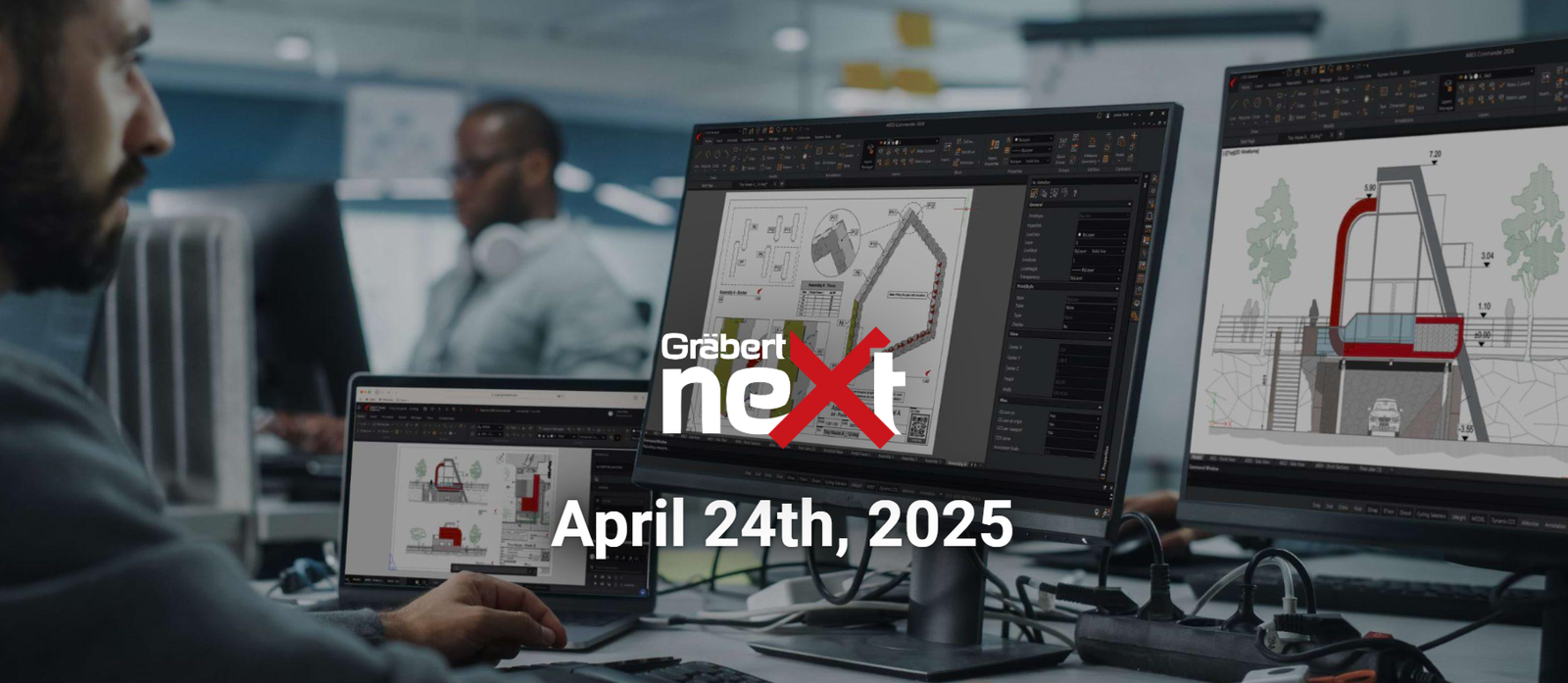Your Cart is Empty
Customer Testimonials
-
"Great customer service. The folks at Novedge were super helpful in navigating a somewhat complicated order including software upgrades and serial numbers in various stages of inactivity. They were friendly and helpful throughout the process.."
Ruben Ruckmark
"Quick & very helpful. We have been using Novedge for years and are very happy with their quick service when we need to make a purchase and excellent support resolving any issues."
Will Woodson
"Scott is the best. He reminds me about subscriptions dates, guides me in the correct direction for updates. He always responds promptly to me. He is literally the reason I continue to work with Novedge and will do so in the future."
Edward Mchugh
"Calvin Lok is “the man”. After my purchase of Sketchup 2021, he called me and provided step-by-step instructions to ease me through difficulties I was having with the setup of my new software."
Mike Borzage
The Edge: Ilan Gabai’s Epic Animation
May 17, 2013 6 min read

Novedge: Tell us about yourself and what you do.
Ilan Gabai: Hello! My name is Ilan Gabai, and I am an effects animator (technical director) located in NYC. I earned my BFA in digital arts in 2007, and have since worked in the entertainment industry. I began my career working on TV shows and live action film, but over time shifted towards feature animation. Today I work as a full time effects artist at Blue Sky Studios/20th Century Fox. I have previously worked on projects such as Ice Age 4, Rio, Fast & Furious, Lost, Fringe, Rescue Me and more. I like to teach in my spare time, I have lectured and taught courses at Gnomon, SVA & Pratt. I gave my first SIGGRAPH presentation last year in L.A.
As an effects artist I am responsible for developing techniques and creating appealing visuals to support the story. My favorite part of the job is that I am involved with both development and animation of my effects work. Some examples of effects work include Oceans, water splashes, smoke, fire, dust, magic, explosions, destruction, etc.
//player.vimeo.com/video/63278044?portrait=0&color=fe49e2
Ilan Gabai – 2012 FX Reel from Ilan Gabai on Vimeo.
Novedge: You have worked on TV projects, films and animated features. How similar and how different is to work in these different fields?
Ilan Gabai: Short answer: The amount of time you have to deliver your work.
More elaborate answer: While the goals and type of work may be similar, there are quite a number of differences between the project types. They are all pretty demanding in their own unique way. Working in episodic television can definitely take a few years off of your life span. Other than pilot shows and season premieres, you have on average 2 weeks to complete all of the visual effects for an episode. Your studio is generally hired as a visual effects vendor for a larger production company. There really is no room for screwing up. So you look for the least time consuming, most aesthetically pleasing solution. Because you have very little (if any) time to develop ideas, it is best that you rely on prior experiences that have proven results. In episodic television, your development time is during the pilots and premiers which generally have longer deadlines.


I find live action films to be closer in nature to episodic television pilots, with higher aesthetic demands. So you generally have more time to work on a shot, but you are expected to create a visual effect at the highest level of realism. You are still hired as a vendor to work on a larger production. Visual effects for films usually get distributed over a number of studios simultaneously. So there are a number of vfx vendors completing work on different sequences for a larger production studio. Also, as many of the readers are probably familiar with this, the vfx industry is going through a serious struggle right now. The flat rate bids definitely add pressure to the work environment when your employer is trying to stay within budget. Artists are frequently forced to relocate in order to stay employed. These pressures create a more challenging work environment, which made my decision to shift towards feature animation an easier one.

Working at Blue Sky Studios has been a great experience for me. It has been a breath of fresh air. The studio is family oriented, and a pretty fun place to work. Like all work places, we have deadlines and crunch times; but somehow they feel much easier to meet here. Most likely because we have a good recipe for making film production work. Unlike in live action, here at Blue Sky we make our own films. Everybody gets credited for their work here, including babies that were born to artists during production. I think that the fact that our movies are made in house also makes us feel more attached to them. We take the success or failure (but mostly success) of our work very personally. Another big difference between working in feature animation vs live action is our ability to create more stylized visuals. While we do have art direction, artists are given plenty of opportunities to share their ideas and creativity. We usually have time dedicated to developing new ideas and techniques between films or at the beginning of a new production.
Novedge: What is a recent project that you worked on?
Ilan Gabai: I just completed my work for the upcoming film Epic, and am currently working on Rio 2.
I can only share what has already been publicly announced about Epic. The film is based off the children's book The Leaf Men and the Brave Good Bugs by William Joyce. and is directed by Chris Wedge (Ice Age, Robots). The story is described on Wikipedia as a "battle deep in the forest between the forces of good and evil, and tells a story of a teenage girl who finds herself in a secret world, where she must help a team of fun and whimsical characters to save their world, which also saves the real world."
Back to my opinion: visually, the movie is amazing! Everyone here at the studio really pushed themselves artistically and technically to the next level. You can get a bit of a taste of that by viewing our trailer, but most of the exciting work won't be seen until the film is released. And we are all very excited to share this with the the world this coming May.
Novedge: What software do you use?
Ilan Gabai: I work with a variety of software packages. My main software for effects work is Houdini. I use Houdini for its procedural and non-destructive workflow. While other software packages are slowly catching up, Houdini has been the first to go fully procedural, and is designed from the ground up to work in that way. We maintain a close relationship with the developers at Side Effects Software, and work closely with them to figure out ways to tackle new challenges. The level of support that sidefx has shown us during our productions has been second to none in my experience.
For liquid simulations I sometimes use RealFlow. RealFlow is a great stand alone liquid simulation package. It does actually offer more than just that, but liquids are what they have become known for. After creating your simulation in RealFlow, you can easily export your results to any major 3D package. The company that created RealFlow, Next Limit, is a small and friendly company located in Spain. They are very personable, and work closely with their clientele. For me it is always a huge plus to see that a company goes out of its way to make user experience a high priority.
For general 3D usage, I work with Maya. Maya is the 3D package that I was taught to use in college. It also seemed to be the most wide spread package of choice amongst the US based studios that I have worked for in the past. So until I arrived at Blue Sky, Maya was the main software package at the studios I worked for. It is a strong general package for all contexts of the 3D pipeline such as modeling, texturing, animation, effects and lighting ( with the help of external plugins).


Novedge: What would you say to young people who want to work in the visual effects field? What skills, both technical and personal, are in demand in the industry?
Ilan Gabai: This is a very competitive field of work, which requires an artistic eye and a certain degree of technical know how (it varies depending on the area of specialty).
With technology rapidly improving, it is important that you stay on top of things. I personally read, and practice a lot in my spare time. The industry is filled with extremely passionate people, so it is hard to compete against them if you are less dedicated than they are. For those of you currently earning a degree in the field, just holding a degree isn't enough. You really need to go the extra mile on your own and gain a professional level of knowledge these days. For effects work specifically, it's important to have an eye for detail, a creative thought process and a technical mind set. Finding an artist that excels in all of those areas is sometimes a challenging task.
With all that aside, it really is a rewarding field of work. It doesn't feel like a job when you enjoy what you are doing. I still get excited every time I start a new film, or even a sequence of a film. Also, for me, my work environment is a big plus. We enjoy lots of little perks, game room, film screenings, guest speakers, studio parties, etc. It definitely beats a 9-5 office job!
Would you like to see more of Ilan's work? Check out his Vimeo channel.
Are you on Tumblr? Follow us on The World is 3D!
And don't forget that Epic opens in US theaters on May 24th!
Related articles
Also in NOVEDGE Blog

Enhance Your Designs with VisualARQ 3: Effortless Geometry Extensions for Walls and Columns
April 30, 2025 8 min read
Read More
MecSoft Unveils RhinoCAM 2025 and VisualCAD/CAM 2025 with Enhanced Features
March 08, 2025 5 min read
Read MoreSubscribe
Sign up to get the latest on sales, new releases and more …





